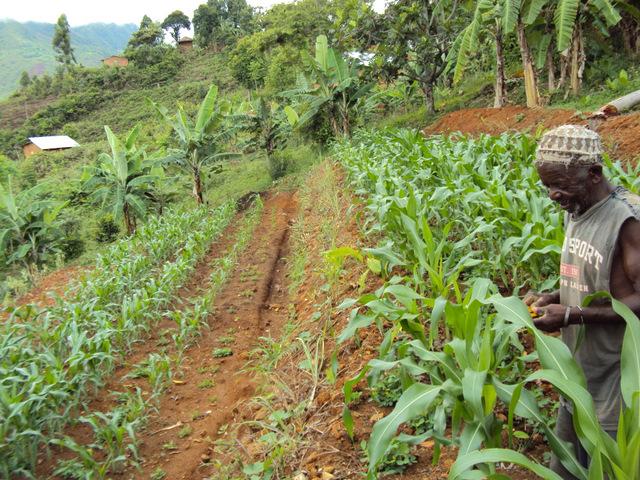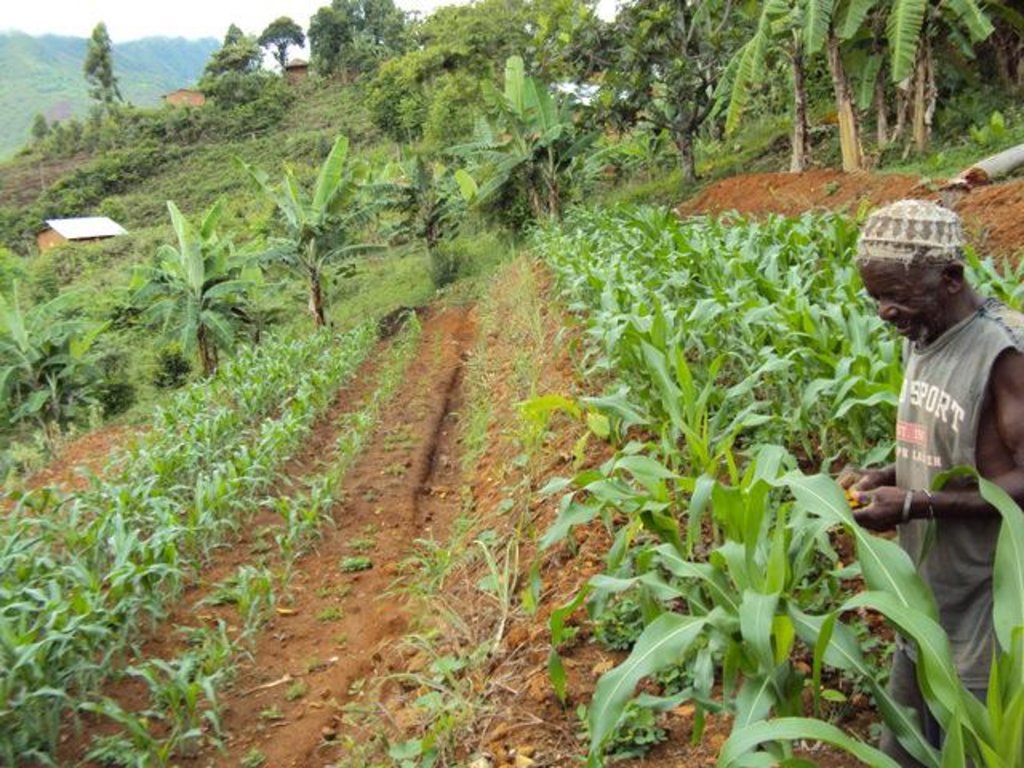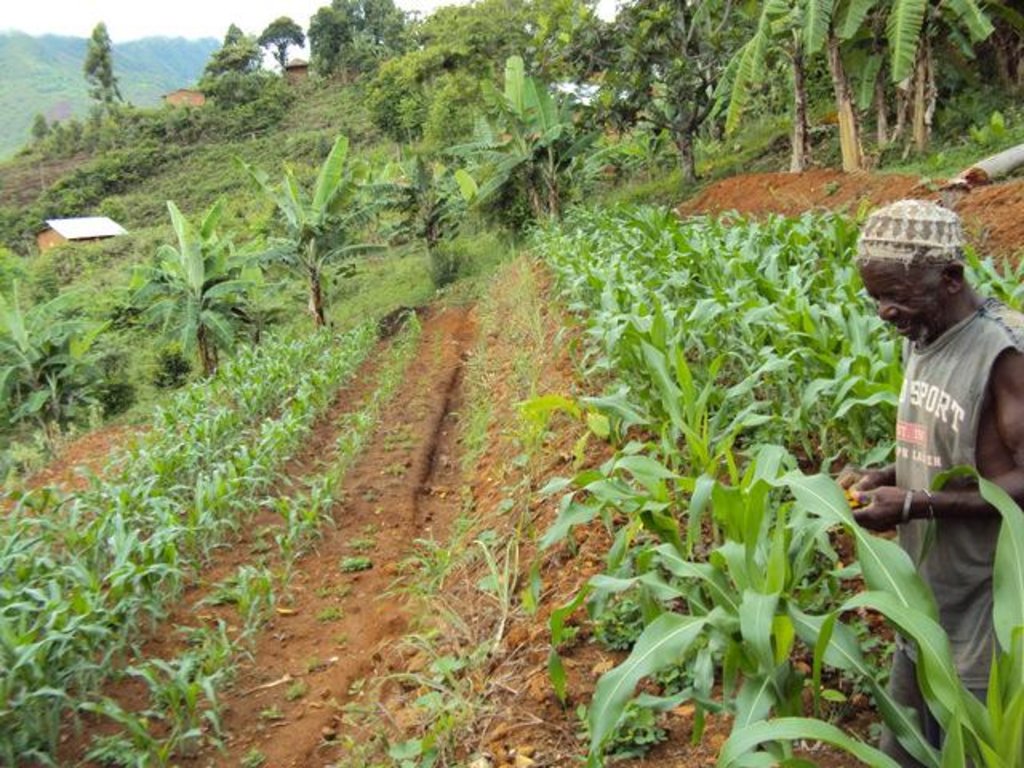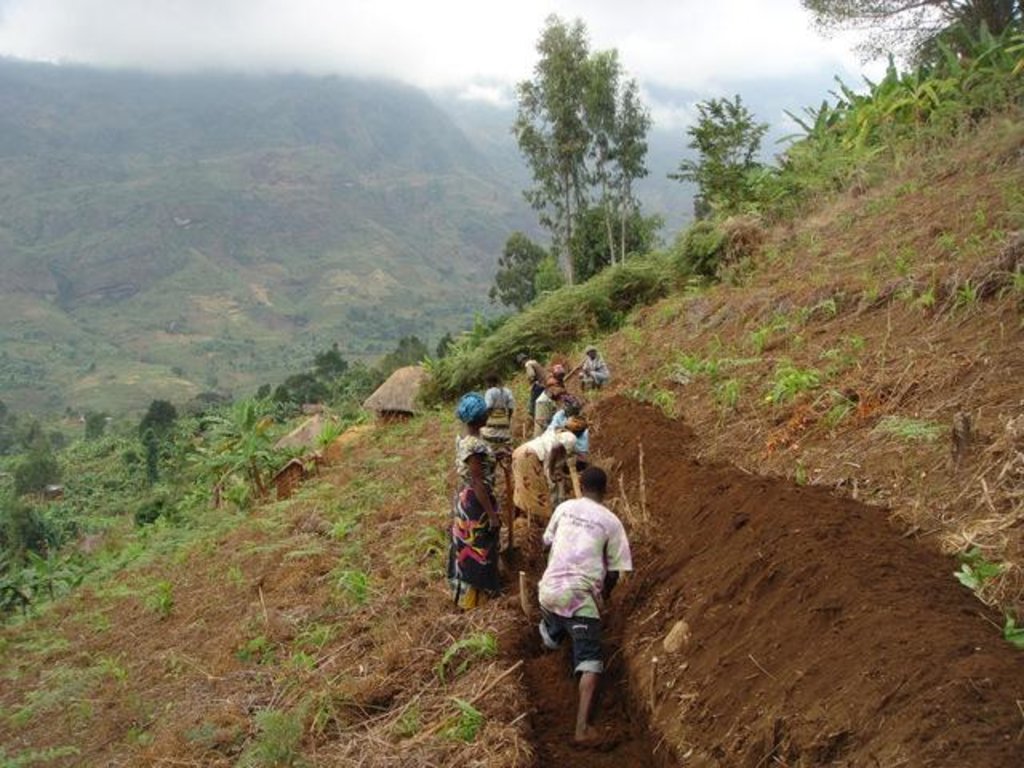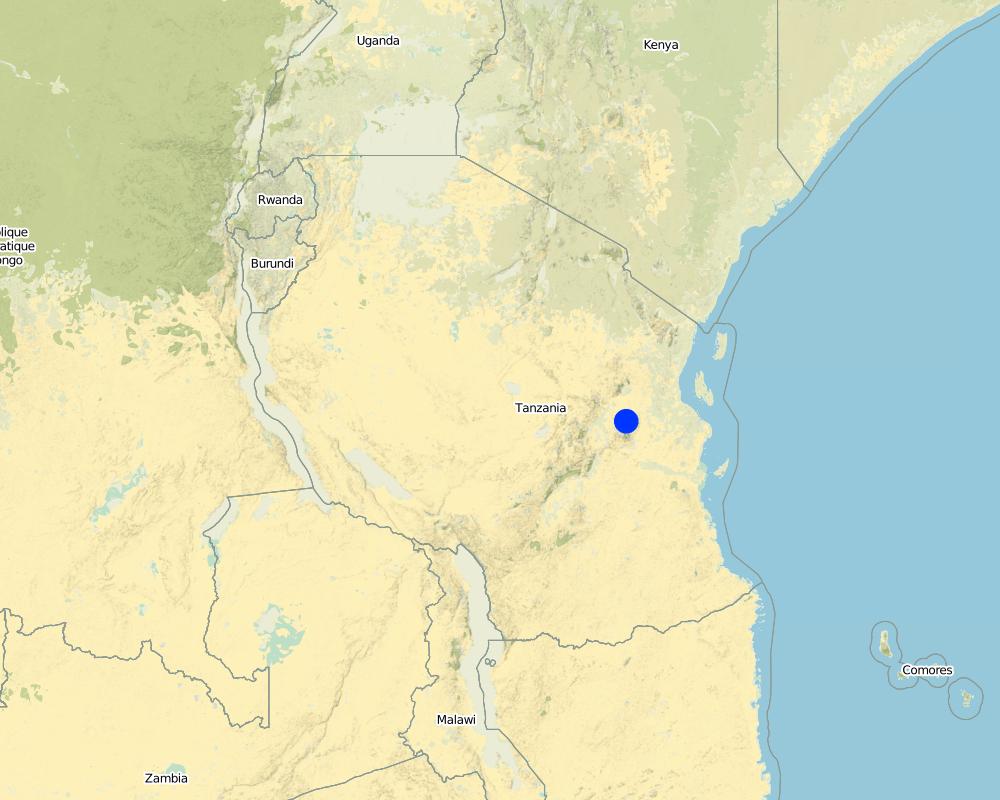Equitable Payments for Watershed Services [Tanzania, República Unida de]
- Creación:
- Actualización:
- Compilador: Philippe Zahner
- Editor: –
- Revisor: Fabian Ottiger
approaches_2567 - Tanzania, República Unida de
Visualizar secciones
Expandir todo Colapsar todos1. Información general
1.2 Detalles de contacto de las personas de referencia e instituciones involucradas en la evaluación y la documentación del Enfoque
Especialista MST:
Dosteus Lopa
dosteus.lopa@co.care.org
CARE International in Tanzania
Morogoro
Tanzania, República Unida de
Nombre de la(s) institución(es) que facilitaron la documentación/ evaluación del Enfoque si fuera relevante)
Swiss Agency for Development and Cooperation (DEZA / COSUDE / DDC / SDC) - SuizaNombre de la(s) institución(es) que facilitaron la documentación/ evaluación del Enfoque si fuera relevante)
CARE International (CARE) - Estados Unidos1.3 Condiciones referidas al uso de datos documentados mediante WOCAT
El compilador y la/s persona(s) de referencia claves aceptan las condiciones acerca del uso de los datos documentados mediante WOCAT :
Sí
2. Descripción del Enfoque MST
2.1 Breve descripción del Enfoque
Equitable Payments for Watershed Services (EPWS) is a programme using Payments for Ecosystem Services (PES) to improve rural livelihoods.
2.2 Descripción detallada del Enfoque MST
Descripción detallada del Enfoque MST:
Aims / objectives: Incentive mechanisms are used to reward upstream landowners for maintaining a beneficial land use or for adapting a particular land use practice which affects the availability and/or quality of downstream water resources. The EPWS approach has enormous potential to advance a new conservation revolution based on a compensation mechanism encouraging and financing conservation efforts as well as improving the livelihoods of the rural poor. EPWS aims to spread SLM technologies to communities, to raise awareness of the benefits of SLM and to improve land productivity. Farmer groups are formed to lead the implementation of SLM.
Methods: The approach includes supervision, support and training of farmers to ensure appropriate implementation of SLM and efficient soil erosion control. Methods include demonstration plots and farmer-to-farmer extension. Capacity building to farmers (on gender mainstreaming, good governance and relevant laws and policies) and monitoring of hydrological and livelihood status are important components of the approach. Efforts to ensure good women integration resulted in a relatively high proportion within the farmer groups (>35%). A payment mechanism has been established to compensate farmers for delivering watershed services (in form of freshwater) through implementation of SLM. Compensation payments – paid in cash and through material support – are made first to establish land use changes, and thereafter for service delivery and maintenance. They are mainly covered through international donors (DANIDA) and ‘buyers’ from the private sector, investing in watershed management.
Role of stakeholders: The EPWS team consisting of CARE International, WWF staffs and short-term workers (such as students) is always involving government staff in various activities to induce them to knowledge on EPWS in particular and the PES concept at large.
Other important information: This PES approach is very new in the country and there is little expertise within the government -which therefore needs to take deliberate efforts to groom experts through seminars and courses on PES mechanisms and its operationalisation
2.3 Fotos del Enfoque
2.5 País/ región/ lugares donde el Enfoque fue aplicado
País:
Tanzania, República Unida de
Especifique más el lugar :
Morogoro
Map
×2.7 Tipo de Enfoque
- proyecto/ basado en un programa
2.8 Propósitos/ objetivos principales del Enfoque
The Approach focused mainly on SLM with other activities (Improvement of livelihoods, improvement of hydrological system)
Improve livelihoods through SLM / Improvement of hydrological system / Mechanism to ensure effectiveness, growth and sustainability of EPWS / Enhance quality of program implementation
The SLM Approach addressed the following problems: Land cover changes due to extensive cultivations / Deforestation and forest degradation / Soil erosion, loss of soil fertility / Low storage capacity of the Uluguru Mountains due to land cover change / Declining amount of available water in the river coming from Uluguru Mts / Increased run-off and sediment load in water system due to bare lands
3. Participación y roles de las partes interesadas involucradas
3.1 Partes interesadas involucradas en el Enfoque y sus roles
- usuarios locales de tierras/ comunidades locales
Efforts to ensure good women integration resulted in a relatively high proportion within the farmer groups (>35%).
- especialistas MST/consejeros agrícolas
experts on hydrology, GIS, SWC, economics, forests, etc.
- ONG
DAWASCO
- sector privado
Coca Cola KLtd
- gobierno local
Morogoro district council
district commissioners, ward councillors
- organización internacional
DANIDA, CARE International Tanzania, WWF Tanzania
3.2 Involucramiento de los usuarios locales de tierras/ comunidades locales en las distintas fases del Enfoque
| Involucramiento de los usuarios locales de tierras/ comunidades locales | Especifique quién se involucró y describa las actividades | |
|---|---|---|
| iniciación/ motivación | ninguno | |
| planificación | interactivo | |
| implementación | apoyo externo | Farmers are being compensated (paid in cash) for labour and area provided for the implementation of SLM (opportunity costs). Material support through manure, seeds and working tools is given as well. |
| monitoreo y evaluación | ninguno | |
| Research | ninguno |
3.4 La toma de decisiones en la selección de Tecnología(s) MST
Especifique quién decidió la selección de las Tecnología/ Tecnologías a implementarse:
- principalmente por especialistas MST en consulta con usuarios de tierras
Explique:
Interactive implementation and decision making; participatory feasibility studies to identify the core problems; PRA to identify and agree on SLM technologies; government staff was involved in various activities e.g. planning, training, data collection and analysis, extension, etc.
Decisions on the method of implementing the SLM Technology were made by mainly by land users supported by SLM specialists
4. Apoyo técnico, fortalecimiento institucional y gestión del conocimiento
4.1 Construcción de capacidades / capacitación
¿Se proporcionó la capacitación a usuarios de tierras/ otras partes interesadas?
Sí
Especifique quién fue capacitado:
- usuarios de tierras
Forma de capacitación:
- de agricultor a agricultor
- áreas de demostración
Temas avanzados:
practical skills on SLM measures, leadership skills, governance, gender mainstreaming, policies and laws to ensure their understanding on the implementation of the EPWS project in their locality
4.2 Servicio de asesoría
¿Los usuarios de tierras tienen acceso a un servicio de asesoría?
Sí
Especifique si servicio proporcionado se realizó:
- en los campos de los usuarios de tierras
Describa/ comentarios:
Key elements: technical support on monitoring, provision of extension services for improved land use, situation analysis, awareness creation, capacity building on legal issues and mapping of interventions; People involved: University, foresters, hydrologists, Ministry of agriculture, land use planners
4.3 Fortalecimiento institucional (desarrollo institucional)
¿Se establecieron o fortalecieron instituciones mediante el Enfoque?
- no
4.4 Monitoreo y evaluación
¿El monitoreo y la evaluación forman parte del Enfoque?
Sí
Comentarios:
bio-physical aspects were monitored through measurements
socio-cultural aspects were monitored through observations
economic / production aspects were monitored through observations
4.5 Investigación
¿La investigación formó parte del Enfoque?
Sí
Especifique los temas:
- sociología
- economía/ marketing
- ecología
Proporcione detalles adicionales e indique quién hizo la investigación:
Research is a main part of PES as an approach to facilitate SLM adoption and has been very effective in guiding programme design; it included SLM assessment, hydrological analysis, economic analysis, social and livelihoods assessment, etc. All interventions applied were proposed by research conducted before and during implementation.
Research was carried out on-farm
5. Financiamiento y apoyo material externo
5.1 Presupuesto anual para el componente MST del Enfoque
Si no se conoce el presupuesto anual preciso, indique el rango:
- 100,000-1,000,000
Comentarios (ej. fuentes principales de financiamiento/ donantes principales):
Approach costs were met by the following donors: international (DANIDA): 60.0%; private sector ('buyers' of ecosystem service): 9.0%; local community / land user(s) (through labour power): 31.0%
5.2 Apoyo financiero/material proporcionado a los usuarios de tierras
¿Los usuarios de tierras recibieron financiamiento/ apoyo material para implementar la Tecnología/ Tecnologías? :
Sí
5.3 Subsidios para insumos específicos (incluyendo mano de obra)
- agrícola
| Especifique qué insumos se subsidiaron | En qué grado | Especifique los subsidios |
|---|---|---|
| semillas | parcialmente financiado | |
| fertilizantes | parcialmente financiado | |
Si la mano de obra de usuarios de tierras fue un insumo sustancial, ¿fue:
- pagado en efectivo?
Comentarios:
Farmers are being compensated (paid in cash) for labour and area provided for the implementation of SLM (opportunity costs). Material support through manure, seeds and working tools is given as well.
5.4 Crédito
¿Se proporcionó crédito bajo el Enfoque para actividades MST?
No
6. Análisis de impacto y comentarios de conclusión
6.1 Impactos del Enfoque
¿El Enfoque ayudó a los usuarios de tierras a implementar y mantener Tecnologías MST?
- No
- Sí, un poco
- Sí, moderadamente
- Sí, mucho
increased production
¿El Enfoque empoderó a grupos en desventaja social y económica?
- No
- Sí, un poco
- Sí, moderadamente
- Sí, mucho
women have gained training in improving land use practices
Did other land users / projects adopt the Approach?
- No
- Sí, un poco
- Sí, moderadamente
- Sí, mucho
Upscaling to neighbouring villages will be facilitated by the establishment of networks of farmers groups to receive training by local extension services. A steering committee, with representatives of the farmers, investors and government offices will facilitate replication in other parts of the country.
Did the Approach lead to improved livelihoods / human well-being?
- No
- Sí, un poco
- Sí, moderadamente
- Sí, mucho
Did the Approach help to alleviate poverty?
- No
- Sí, un poco
- Sí, moderadamente
- Sí, mucho
through change of crop production
6.2 Motivación principal del usuario de la tierra para implementar MST
- pagos/ subsidios
- afiliación al movimiento/ proyecto/ grupo/ redes
- conciencia medioambiental
- well-being and livelihoods improvement
6.3 Sostenibilidad de las actividades del Enfoque
¿Pueden los usuarios de tierras sostener lo que se implementó mediante el Enfoque (sin apoyo externo)?
- sí
Si respondió que sí, describa cómo:
Participant land users can continue the activity without additional support- maintenance costs are low and the technologies will improve productivity and resilience of farming system. Upscaling to neighbouring villages will be facilitated by the establishment of networks of farmers groups to receive training by local extension services. A steering committee, with representatives of the farmers, investors and government offices will facilitate replication in other parts of the country.
6.4 Fortalezas/ ventajas del Enfoque
| Fuerzas/ ventajas/ oportunidades desde la perspectiva del compilador o de otra persona de referencia clave |
|---|
| PES as an additional argument for supporting property claims |
| To ensure services are delivered and payments are made and a reliable monitoring mechanism has been put in place |
| Poor people are in the centre of the objectives |
| Approach rewards land users for providing watershed services |
| PES as an incentive for conservation, helping to change land users’ vision towards improved land management |
| Once measures are applied they are simple and cheap to maintain |
6.5 Debilidades/ desventajas del Enfoque y formas de sobreponerse a ellos
| Debilidades/ desventajas/ riesgos desde la perspectiva del compilador o de otra persona de referencia clave | ¿Cómo sobreponerse a ellas? |
|---|---|
| May reduce the effectiveness of non-incentive based approaches as people will now demand rewards/payments | awareness creation is important to all players including government and local communities |
| Payments / rewards are realised before service delivery | ensure integration of PES with other approaches to ensure effectives short and long term benefits. Paying labour cost upfront while waiting for the service delivery rewards |
7. Referencias y vínculos
7.1 Métodos/ fuentes de información
- visitas de campo, encuestas de campo
- entrevistas con usuarios de tierras
Vínculos y módulos
Expandir todo Colapsar todosVínculos
No hay vínculos
Módulos
No se hallaron módulos


